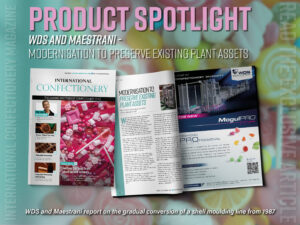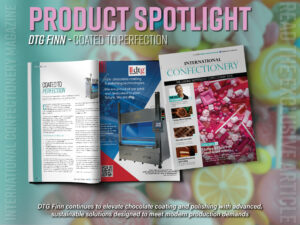International Confectionery explores complete turnkey solutions for the packaging, and moulding and depositing of candy and chocolate production.
As automation becomes widespread in the confectionery industry, complete turnkey solutions prove invaluable for factories which oversee or want to aim for high production capacity. Complete turnkey packaging lines take shape depending on whether candy or chocolate is being produced, and similar nuances exist for the depositing and moulding for these confectionery products. Comparing the production of candy and chocolate reflects that even in the case of complete turnkey solutions, there are important differences which need to be important considerations for the manufacturer.
A turnkey packaging solution means a solution is ready to be used by the manufacturer – its name is derived from the phrase ‘turn the key’, to reflect that very little intervention is needed for the system to begin working. As a complete solution, what the turnkey packaging system looks like will vary from manufacturer to manufacturer, as each system will use different packaging machines – such as power conveyor systems, filling and capping machines, and loading and accumulating turntables as a few examples. This also differs depending on what kind of product is being packaged – whether this is hard candies or chocolates.
In a depositing and moulding turnkey solution, depending on the machinery integrated into the production line, the chocolates that can be processed include a wide range such as solid chocolate, chocolate with nuts, or hollow chocolate: think Easter eggs or Santa shaped figures which are sold around the holiday period. In a one shot moulding line, the moulding lines are made up of modules which can be easily integrated in and out of the production line, giving lots of flexibility to the manufacturer. In a typical process, an empty mould is passed through a pre-heating module to ensure that the deposit will flow freely into the mould. The mould is then fed to the vibrating module, as the vibration ensures there are no air bubbles in the chocolate and the mould is filled evenly.
In the final steps, the filled mould is conveyed into a cooling tunnel to set the chocolate, and returned to the beginning of the process via a return conveyor. Demoulding is carried out at the beginning of the line, which is done either by using vacuuming or twisting depending on the product being processed. Buhler’s continuous moulding line, the ChocoMaster, allows for the operator to switch quickly between products for continuous production of chocolates, bars or tablets, as changeover remains important in this process…
To read more see our latest issue here.
Media contact
Caitlin Gittins
Editor, International Confectionery
Tel: +44 (0) 1622 823 920
Email: [email protected]









